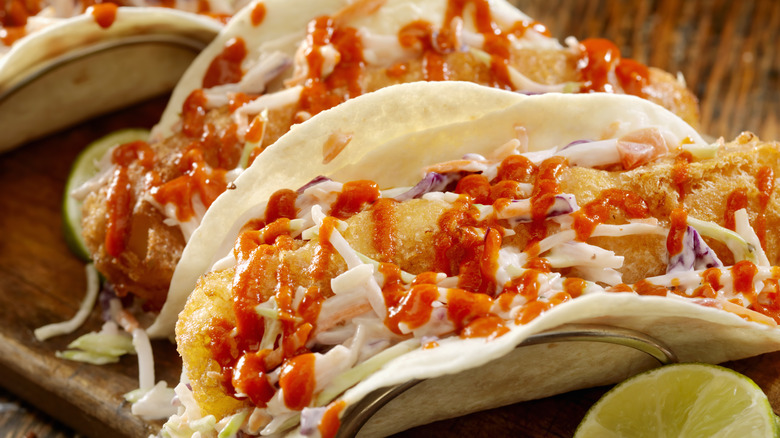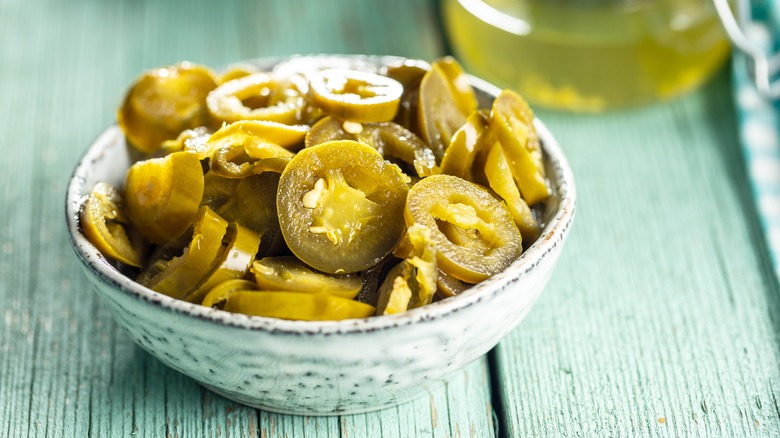The Mild Ingredients To Look Out For If You're New To Buying Hot Sauce
If you're not a hot sauce lover or aficionado, then the hot sauce aisle of the store might be a place you avoid like the plague. Who would ever want to eat something that would set their tongue on fire and make them miserable? While not everyone loves spicy food, the truth is that many people do enjoy the flavor of a good hot sauce, and the endorphin rush that comes along with eating spicy food. TV shows like "Heat Seekers" were created for a reason.
Maybe you've dabbled in hot sauce consumption, or maybe you've never had it and you're curious to see if you'd like it. If you're new, never fear — there are some ways to start slow and build up to eating spicier hot sauce options without becoming a fire-breathing dragon. Chile peppers have a chemical compound called capsaicin that lives in the seeds and ribs of the pepper — the more capsaicin a pepper has, the more spicy it will be.
If you're new to purchasing hot sauce, starting with milder peppers is the way to go. Options like jalapeño, serrano, or even a cayenne pepper-based hot sauce are better gateways. And if you like the flavor, then you can work up to spicier options from there.
Working from mild to spicy
Not only are peppers deemed mild, medium, or hot based on how much capsaicin they have in them, but they are also rated by something called the Scoville scale which measures units of heat. When in doubt, you can look up how spicy a pepper is before you consume it, or anything made from it. For comparison, mild options like Anaheim chiles and Poblano peppers rate between 1,000 and 2,000 on the Scoville scale. Hot peppers like habaneros rate about 80,000 to 600,000.
Jalapeños, serranos, and cayenne peppers are in the middle range, which makes them common ingredients in hot sauces, but not so hot that they'll blast your face off. Jalapeños rate between 2,500 to 8,000, while serranos rate between 6,000-23,000. Cayenne peppers rate between 100,000-125,000 on the Scoville scale.
To the uninitiated palate, hot sauces made from hotter peppers like habanero or scotch bonnet can feel like you're eating fire. But the more you gradually expose your taste buds to spice and heat, the more you'll be able to take. The key is to start slowly. That said, however, some people will never enjoy a really spicy hot sauce and some will.
It comes down to personal preference. If you do want to try a hot sauce that is made from a hotter pepper, then start with smaller amounts. If you're eager to cover your morning eggs or favorite tacos with a flavorful hot sauce but can't take the heat, then start with milder options.

